About Poshan Tracker initiative:
- The Poshan Tracker program identifies and addresses growth issues among children aged 0-6 years, utilizing real-time monitoring and WHO growth charts to ensure optimal nutritional outcomes.
- Anganwadi Workers (AWWs) play a crucial role in evaluating children's health status and implementing timely interventions when deviations from expected growth patterns are detected.
- The Poshan Tracker employs advanced ICT tools and Growth Measuring Devices (GMD) at each Anganwadi Center (AWC) to facilitate accurate data collection and regular monitoring.
- The program's real-time growth monitoring has significantly improved child health outcomes in India, covering millions of children under Mission Poshan 2.0.
Key points about Poshan Tracker App
- This application provides a 360-degree view of the activities of the Anganwadi Centre (child care centres), service deliveries of Anganwadi Workers and complete beneficiary management for pregnant women, lactating mothers and children under six.
- It also digitizes and automates physical registers used by workers to help improve the quality of their work.
- The Anganwadi workers are being provided smartphones procured through Government e-Market (GeM) for efficient service delivery.
- A nodal person has also been appointed to provide technical support and resolve any issue with downloading the new Poshan Tracker application and its functioning in each state.
- The sources that each migrant worker who had registered in their original state could go to the nearest Anganwadi in their current place of residence and avail of the schemes and services offered.
- It was launched by the Ministry of Women and Child Development (MoWCD).
2. Konyak Tribe
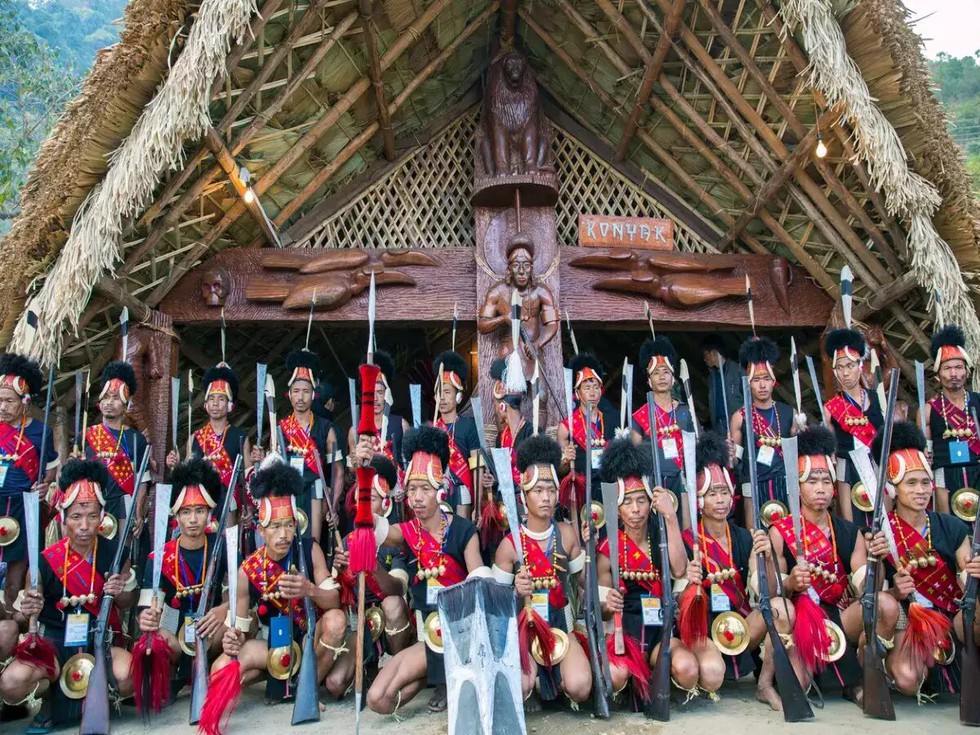
About Konyak Tribe:
- The Konyaks can be found in the Mondistrict of Nagaland and also in the Tirap and Changlang districts of Arunachal Pradesh.
- The term ‘Konyak’ is believed to have been derived from the words ‘Whao’ meaning ‘head’ and ‘Nyak’ meaning ‘black’ translating to ‘men with black hair’.
- They can be grouped into two groups, namely “Thendu”, which means the “Tattooed Face” and “Thentho”, meaning the “White face”.
- The Konyaks are of Mongoloid in origin and about 95% of the population follows the Christian faith now.
- Language: The Konyak language belongs to the Northern Naga sub-branch of the Sal subfamily of Sino-Tibetan.
- Festivals: Festivals occupy an important place in the lives of the Konyaks. The three most significant festivals were Aolingmonyu, Aonyimo and Laoun-ongmo.
- They are skilled in the art of making firearms. They are also skilled in handicrafts like basket making, cane and bamboo works, brass works etc.
- The Konyak society is a patriarchal society and the eldest son of the family usually inherits the paternal property.
3. Exercise Varuna
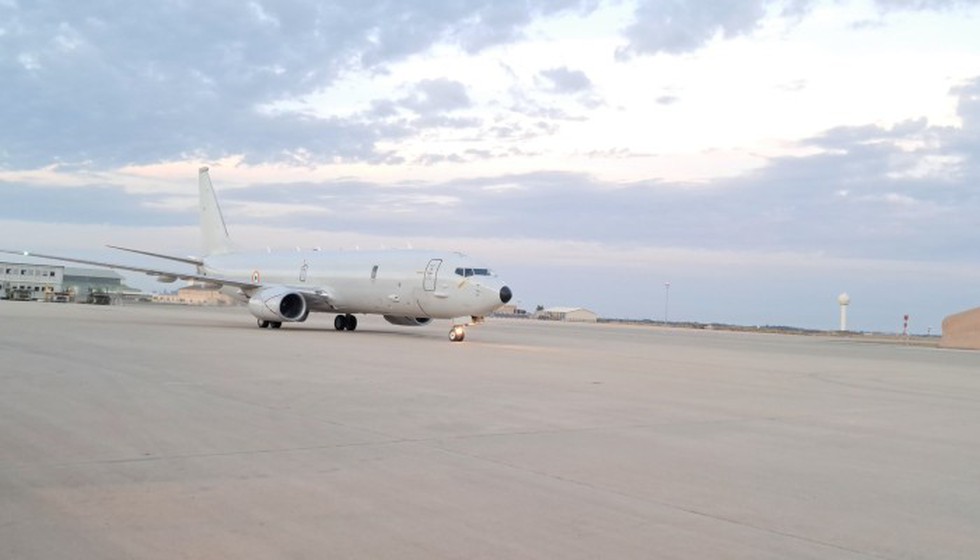
About Exercise Varuna:
- It is the bilateral Naval Exercisebetween India and France.
- This bilateral exercise between the two navies was initiated in 1993.
- It was named ‘VARUNA’ in 2001and has become a hallmark of India-France's strategic bilateral relationship.
- The 2024 edition of Indo-French bilateral naval ‘Exercise Varuna’ is scheduled in the Mediterranean Sea.
- It includes advanced tactical exercises underscoring the deepening synergy and interoperability between the two navies.
- The Indian Navy's P-8I aircraft, renowned for its maritime surveillance and anti-submarine warfare capabilities, will play a pivotal role in these exercises and it joins the INS Tabar.
- The P-8I’s participation in Exercise Varuna reflects the growing sophistication and complexity of the joint operations between the Indian and French navies.
Key facts about P-8I aircraft
- P-8I is a long-range, multi-mission maritime patrol aircraft being manufactured by Boeing for the Indian Navy.
- It replaced the ageing fleet of the Indian Navy’s Tupolev Tu-142 aircraft.
4. Vishvasya-Blockchain Technology Stack

About Vishvasya-Blockchain Technology Stack:
- It is designed to offer Blockchain-as-a-Service (BaaS) with a geographically distributed setup to support a range of permissioned blockchain applications.
- The stack is hosted across NIC Data Centers in Bhubaneswar, Pune and Hyderabad, ensuring robust and scalable service delivery.
- The government also introduced the NBFLite-Lightweight Blockchain Platform and Praamaanik, a blockchain-enabled solution for verifying the origin of mobile apps.
- Application: The Government also unveiled a suite of applications of the Vishvasya BaaS.
- e-Stamps Solution, Judiciary Application, IPS officers service level training record management, Forensic Application
- Praamaanik - verification of mobile app authenticity
- Consent Management Framework
- IoT Device Security Management
- Cotton bale identification and tracking
- Domicile Certificate Chain
- Document Chain (Caste Certificate Chain etc.)
What is National Blockchain Framework?
- The National Blockchain Framework (NBF) has been initiated with the vision of creating reliable digital platforms.
- The NBF is built on a distributed infrastructure and includes key components such as Distributed Infrastructure, Core Framework Functionality, Smart Contracts & API Gateway and Security, Privacy & Interoperability.
- The framework currently supports two permissioned blockchain platforms and is designed to be extensible
5. Food Recovery to Avoid Methane Emissions (FRAME) Methodology

About Food Recovery to Avoid Methane Emissions (FRAME) Methodology:
- It quantifies the avoided emissions and co-benefits from redirecting food loss and waste to direct human consumption, through food recovery and redistribution operations.
- Developed by: It is developed by the Global Food Banking Network (GFN) in partnership with the Global Methane Hub and the Carbon Trust.
- The FRAME initially began as a pilot project in Mexico and Ecuador, where six community-led food banks were analysed.
- The new FRAME tool will allow food banks, food recovery organisations, private sector companies, scientific experts and others working in the food loss and waste sector to be able to accurately measure and manage emissions from food recovery and redistribution.
Key facts about Global Methane Hub
- The Global Methane Hub is a philanthropic organization dedicated to reducing methane emissions globally and significantly boosting philanthropic resources allocated specifically to methane reduction.
- It has donated $10 million to the Climate and Clean Air Coalition(CCAC) to financially assist 30 countries with developing plans to reduce their methane emissions.
6. Narrow-Spectrum Antibiotics

About Narrow-Spectrum Antibiotics:
- Antibiotics are classified as “narrow-spectrum” or “broad-spectrum” depending on the range of bacterial types they affect.
- Narrow-spectrum antibiotics are active against a selected group of bacterial types.
- They can act on either gram +ve or gram –ve but not both.
- They are used for the specific infection when the causative organism is known.
- They will not kill as many of the normal microorganisms in the body as the broad-spectrum antibiotics.
- Because they target very specific bacteria, they don't cause an increase in bacterial resistance and avoid the spread of drug-resistant infections.
- Examples include Azithromycin, Clarithromycin, Erythromycin, etc.
Gram-Positive vs. Gram-Negative Bacteria:
- Gram-negative bacteria are surrounded by a thin peptidoglycan cell wall, which itself is surrounded by an outer membrane containing lipopolysaccharide.
- Gram-positive bacteria lack an outer membrane but are surrounded by layers of peptidoglycan many times thicker than is found in the Gram-negative.
- Gram staining is a technique that uses violet dye to distinguish between gram-positive and gram-negative bacteria.
- If the bacteria are gram-positive, the thick peptidoglycan layer in their cell walls will retain the dye and they will stain violet.
- If the bacteria are gram-negative, the dye will leak out of the thin peptidoglycan layer, and the bacteria will stain red.
- Gram-positive infections include Methicillin-Resistant Staphylococcus Aureus (MRSA) infections, strep infections, and toxic shock syndrome.
- Gram-negative infections include salmonella infections, pneumonia,urinary tract infections, bacterial meningitis, and gonorrhea.
- Knowing whether bacteria is gram-positive or gram-negative can help your health care provider identify the type of infection you have and which antibiotics will be most effective in treating it.
What is Fusobacterium nucleatum?
- It is a common oral opportunistic bacterium which exists in the oral cavity and gastrointestinal tract of humans.
- It causes different infectious diseases in the oropharynx and other parts of the oral cavity.
7. Central Industrial Security Force (CISF)
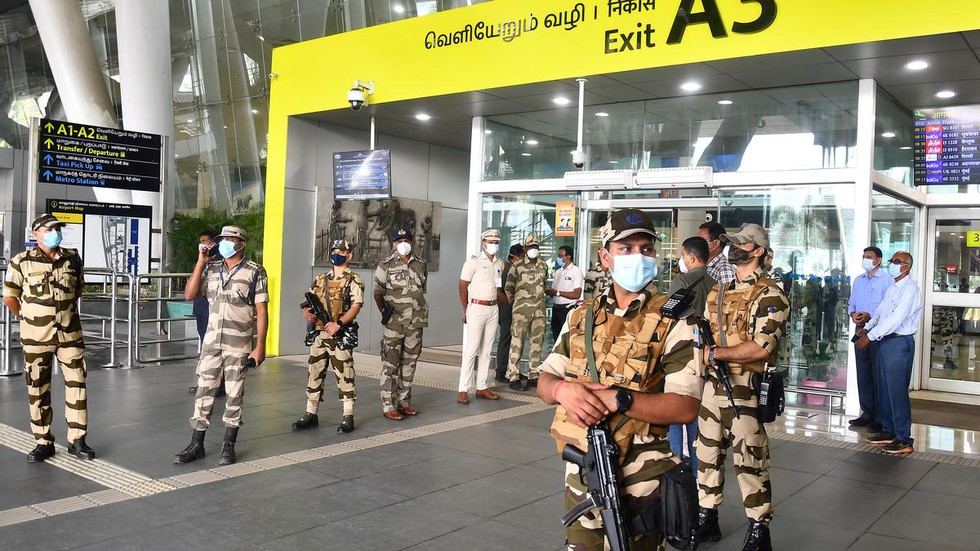
About Central Industrial Security Force (CISF):
- It is a Central Armed Police Force (CAPF) in India.
- It was set up under an Act of the Parliament of India on 10 March 1969 with a strength of 2,800.
- CISF was subsequently made an armed force of the Republic of India by another Act of Parliament passed on 15 June 1983.
- The force has since grown into a premier multi-skilled organization with a present strength of more than 1,88,000 personnel.
- It is directly under the Union Ministry of Home Affairs, and its headquarters are at New Delhi.
- The CISF at present provides security cover to 359 establishments across the country.
- Organisation Structure:
- CISF is headed by an Indian Police Service officer with the rank of Director-General, assisted by an IPS officer in the rank of Addl. Director-General.
- The force is divided into seven sectors (Airport, North, North-East, East, West, South, and Training), and also has a Fire Service Wing.
- Functions:
- The CISF security umbrella includes India’s most critical infrastructure facilities like nuclear installations, space establishments, airports, seaports, power plants, etc.
- The specialized task of airport security was assigned to CISF in the year 2000 in the wake of the hijacking of Indian Airlines Flight IC-814 to Kandahar.
- In addition, the CISF also protects important government buildings, iconic heritage monuments, Delhi Metro, Parliament House Complex, and Central Jails of Jammu and Kashmir.
- The CISF also has a specialized VIP Security vertical, providing round-the-clock security to important protectees.
- CISF is one of the largest Fire Protection Service providers in the country. CISF is the only force with a customized and dedicated fire wing.
- Post the Mumbai terror attack in November 2008, the mandate of CISF was broadened to provide security cover to private corporate establishments also.
- The CISF also provides security consultancy services to private entities and its services are much in demand.
- The CISF is the only CAPF with a daily public interface - in the airports, in the Delhi Metro, and in the iconic monuments.
8. New Flag and Insignia of the Supreme Court of India
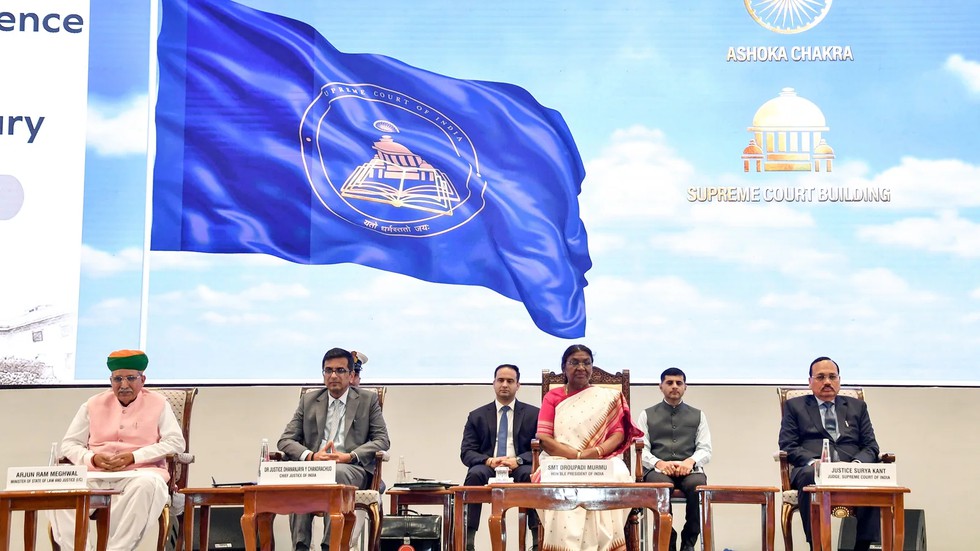
About New Flag and Insignia of the Supreme Court of India:
- The newly unveiled flag features symbols central to India's legal and cultural heritage: the Ashoka Chakra, the Supreme Court building, and the Constitution of India.
- The new Supreme Court flag is blue in colour.
- The insignia has ‘Supreme Court of India’ and ‘Yato Dharmastato Jayah’ (in Devanagari script) inscribed on it.
- The phrase "Yato Dharmastato Jayah" is a Sanskrit expression that translates to "Where there is Dharma, there is victory" or “Victory lies where Dharma (righteousness) prevails.”
- This phrase encapsulates the essence of justice and righteousness that the Supreme Court strives to uphold.
- The new flag and insignia were conceptualized and designed by the National Institute of Fashion Technology (NIFT), Delhi.
- The flag will be available in various designs, including cross table flat, single table flag, pole flag, and wooden frame, ensuring its presence in diverse settings.
9. Smart Cities Mission (SCM)
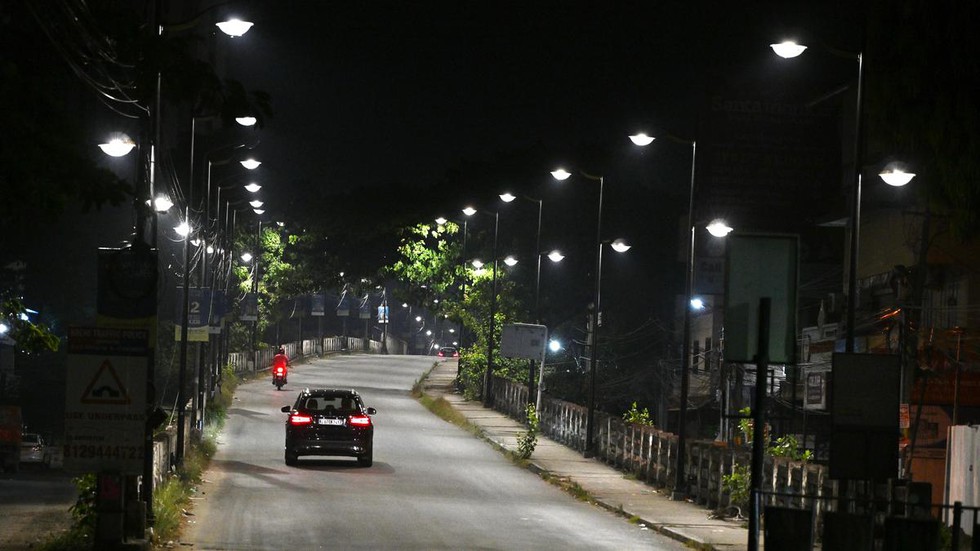
About Smart Cities Mission (SCM):
- It was launched on 25 June 2015.
- The main objective of the SCM is to promote cities that provide core infrastructure, a clean and sustainable environment, and a decent quality of life to their citizens through the application of ‘smart solutions’.
- The mission aims to drive economic growth and improve quality of life through comprehensive work on the social, economic, physical, and institutional pillars of the city.
- The focus is on sustainable and inclusive development through the creation of replicable models that act as lighthouses for other aspiring cities.
- 100 citieshave been selected to be developed as Smart Cities (through a two-stage competition) in various rounds from 2016 to 2018, with each getting five years from their selection to complete the projects.
- It is a Centrally Sponsored Scheme under the Union Ministry of Housing and Urban Affairs (MoHUA).
- Some of the core infrastructure elements in a Smart City would include adequate water supply, assured electricity supply, sanitation, including solid waste management, efficient urban mobility and public transport, affordable housing, especially for the poor, robust IT connectivity and digitalization, good governance, especially e-Governance and citizen participation, sustainable environment, safety and security of citizens, particularly women, children, and the elderly, and health and education.
- The strategic components of the Smart Cities Mission are city improvement (retrofitting), city renewal (redevelopment), and city extension (Greenfield development), plus a Pan-city initiative in which Smart Solutions are applied, covering larger parts of the city.
- Funding:
- The Central Government will give financial support to the extent of Rs. 48,000 crores over 5 years, i.e., on an average of Rs.100 crore per city per year.
- An equal amount on a matching basis is to be provided by the State/ Urban Local Bodies (ULBs).
- Additional resources are to be raised through convergence, from ULBs’ own funds, grants under the Finance Commission, innovative finance mechanisms such as Municipal Bonds, other government programs, and borrowings.
- Emphasis has been given on the participation of the private sector through Public Private Partnerships (PPP).
10. Arnoux’s Beaked Whale
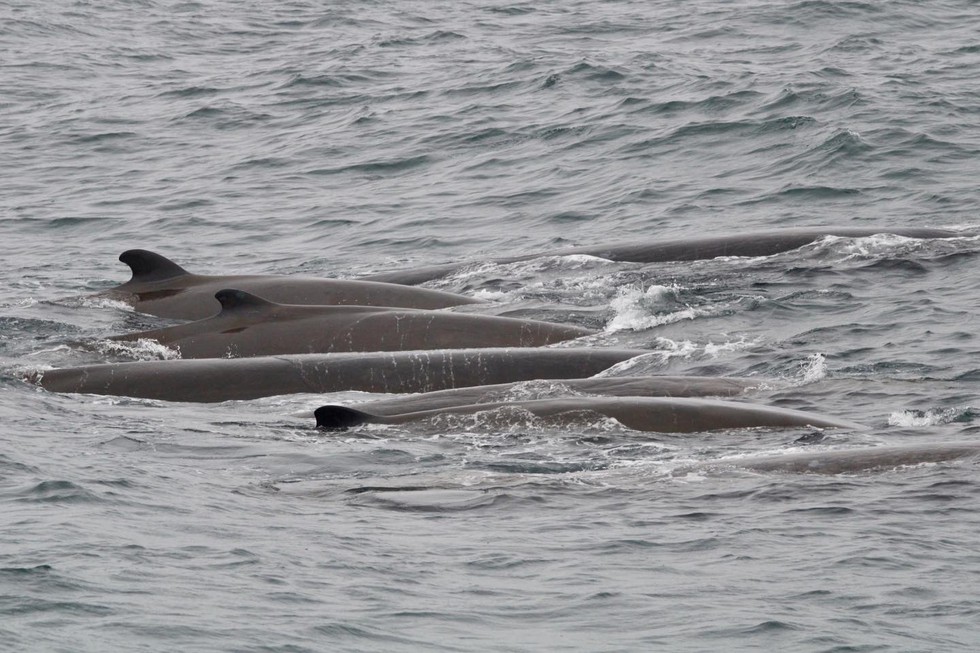
About Arnoux’s Beaked Whale:
- They are a rare cetacean species.
- A cetacean is a member of the family of large aquatic mammals such as whales, dolphins, and porpoises.
- Scientific Name: Berardius arnuxii
- Arnoux’s Beaked Whales are a gregarious species generally found in groups of 6-10, but larger groups of 80 individuals have been recorded.
- Distribution:
- They are found only in the Southern Hemisphere.
- Their distribution is circumpolar in deep, cool temperate and subpolar waters, generally south of 40°S to the edge of the Antarctic ice shelf (approximately 78°S).
- Features:
- They are known for brilliant diving abilities and can measure up to around 30 feet long.
- Females are thought to be slightly larger than the males.
- The body is spindle-shaped and resembles dolphins in appearance.
- The dorsal fin is small, triangular, slightly hooked, and positioned well back on the body.
- They are predominantly dark brown in color with paler colouring on their head and ventral sides (undersides), which also have white patches.
- Like other whale species, males show extensive scarring, particularly around their dorsal fins.
- They are often called Southern four-toothed Whales because of their four teeth found in their lower jaws that are visible even when their mouth is closed.
- Conservation Status:
- IUCN Red List: Least Concern


























































































































































.png)
.png)
.png)
.png)
.png)


.png)
.png)
.png)





.png)
.png)






.png)
.png)
.png)
.png)
.png)
.png)
.png)
.png)
.png)

.png)







.png)
.png)


.png)
.png)
.png)


.png)

.png)
.png)





.jpg)

.png)
.png)


.png)

.png)
.png)
.png)

.jpg)

.jpg)


.png)

.png)
.png)
.png)
.png)
.png)
.png)
.png)
.png)
.png)
.png)




.png)

.png)





.png)
.png)
.png)
.png)
.png)
.png)
.png)
.png)
.png)
.png)
.jpg)
.jpg)

.png)
.png)
.png)
.png)
.png)
.png)
.png)
.png)
.png)
.png)
.png)
.png)
.png)
.png)
.png)
.png)
.png)
.png)
.png)
.png)
.png)
.png)



.png)
.png)

.jpg)
.jpg)


.jpg)
.jpg)
.jpg)
.jpg)
.jpg)

.jpg)








.jpg)
.jpg)
.jpg)
.jpg)
.jpg)

















.jpg)
.jpg)







.jpg)


















.jpg)
.jpg)






























































































.jpg)
.jpg)


























.jpg)

.jpg)










.jpg)








.jpg)




.jpg)










.jpg)


















.jpg)












































.jpg)














.jpg)
.jpg)
.jpg)





.jpg)

.jpg)
.jpg)





































































.jpg)


































.jpg)
.jpg)
















































.jpg)












.jpg)


.jpg)




.jpg)
.jpg)
.jpg)

.jpg)
.jpg)
.jpg)
.jpg)

.jpg)
.jpg)
.jpg)

.jpg)
.jpg)
.jpg)
.jpg)
.jpg)
.jpg)
.jpg)
.jpg)

.jpg)


.jpg)
.jpg)
.jpg)
.jpg)
.jpg)
.jpg)
.jpg)
.jpg)
.jpg)
.jpg)











.jpg)
.jpg)





.jpg)
.jpg)
.jpg)
























.jpg)
























.jpg)









.jpg)
.jpg)







.jpg)
.jpg)









































.jpg)
.jpg)
.jpg)
.jpg)
.jpg)

.jpg)
.jpg)
.jpg)
.jpg)
.jpg)


.jpg)
.jpg)
.jpg)
.jpg)
.jpg)

.jpg)
.jpg)
.jpg)
.jpg)
.jpg)
.jpg)
.jpg)
.jpg)
.jpg)
.jpg)
.png)

.png)
.png)

.png)
.png)
.png)
.png)


.jpg)
.jpg)

.jpg)
.jpg)
.jpg)

.png)
.png)
.png)
.png)
.png)
.png)
.png)

.png)
.png)
.png)
.png)
.png)
.png)
.png)
.png)
.png)
.png)





































































-min.png)



.png)




.png)








































